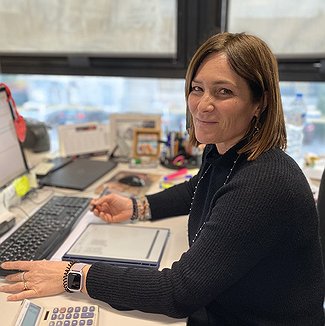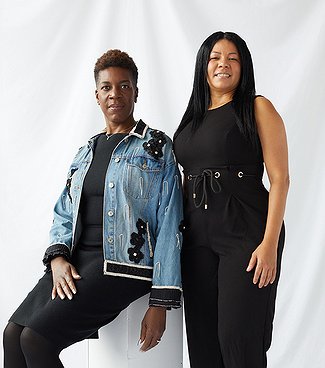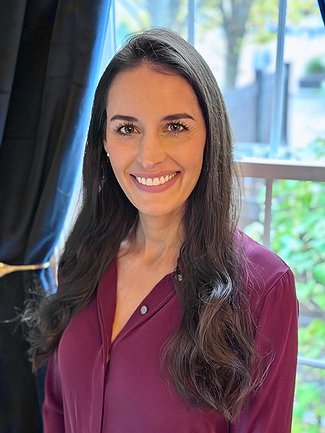Much more work must be done to bring the fashion business current on the sustainability commitments that many companies have made, but there seem to be some missing elements to the work currently being performed. Although many in the industry approach sustainability with high hopes and good intentions, greenwashing is a challenge, and the business is nowhere near the levels of where it should be regarding responsibility, transparency and ecological alignment compared with the number of companies that claim adherence to guidelines that will clean up fashion.
As scientists, climate experts and activists continue to call for an acceleration of green initiatives to thwart the negative human impacts on the environment, important details are being overlooked as companies chart their paths toward cleaner approaches to making clothing.
California Apparel News asked sustainability experts in the fashion industry: What is the most overlooked or underrated component of sustainability that brands, manufacturers and suppliers must prioritize to move the fashion industry forward toward a more sustainable industry?

Kerry Bannigan
Managing Director
PVBLIC Foundation
As we navigate the path toward a more sustainable fashion industry, let’s not underestimate the transformative power of prioritizing gender equality. From the boardroom to the factory floor, we must prioritize empowering women, ensuring fair representation and fostering inclusive workplaces. Addressing this often-overlooked fundamental aspect is not just a social imperative but also a strategic move to fortify the industry’s resilience and long-term sustainable ecosystem.

Kay Bloomberg
Chief of Staff
Aii
One of the most significant opportunities for greenhouse-gas reductions in our industry is diminishing the reliance on fossil fuels for thermal processes such as heating water for dyeing fabric and generating steam. We’re planning to deploy a notable portion of grant funding from our Fashion Climate Fund toward solutions that, when scaled, will help the industry phase out coal in favor of other fuel sources for thermal energy or minimize the need for thermal energy in the production process, such as waterless dyeing. Compared to innovations like new materials, which have their role to play in reaching net zero but will require massive investment to scale, coal phase-out and energy efficiency continue to be underrated when building out decarbonization plans.

Tricia Carey
Chief Commercial Officer
RENEWCELL
Adopting solutions that exist now, at scale. We do not have another five years to put off the large-scale substitution of traditional materials for next-gen alternatives—we need to move out of the capsule and into the core collections. While we still need to invest in new technologies and continually improve processes and materials, we must not let the perfect be the enemy of the good.

Paola Corna
Co-Chief Executive Officer
ACM
The priority for brands and suppliers should be to evolve toward new, more-sustainable production systems based on concrete and measurable actions. With this in mind, from an ESG perspective, certifications on processes and products become crucial.
At ACM, we not only seek to constantly innovate our products, offering a wide range of accessories sourced from recycled and recyclable materials—as of 2021, we are GRS certified, the most important international standard that recognizes the importance of recycling—plant-based, natural ingredients, and environmentally friendly options. But we also focus on a working environment that can meet these same dictates. For decades we have benefited from a water recirculation system that eliminates waste, and the company’s energy needs are now fully covered by a photovoltaic panel system. Since last year, we have integrated an environmental impact certification, the WeImpact Index, and a social one, the HappyIndex AtWork, which are key components to ensure sustainability that generates value for people, the territory and the market.
In fact, ours is a historic company that from father to daughters has handed down human values that are now fortunately part of the culture of sustainability and that we hope will be increasingly widespread, though it is certainly more difficult to measure and trace than supply-chain or technical performance.

Mark D’Sa
Business Development Specialist
Panda Biotech
Hemp’s untapped potential as a resilient fiber alternative must be elevated in sustainability conversations. Industrial hemp can grow with two to eight inches of rainfall, nitrogen fertilizer and no herbicide. In its 120-day growth to maturity and field retting, the plant sequesters carbon, and the bast fiber is durable and can blend with cotton, viscose, lyocell and other fibers.
At Panda’s Wichita Falls, Texas, facility, bales of hemp straw from U.S. farmers and Native American tribes are decorticated, cleaned, refined and cottonized to deliver spinnable fiber that is biodegradable. The entire process is free of water, steam and chemicals and uses 100 percent renewable energy. There is zero waste, and nothing goes to a landfill.
Sustainability starts with the seed in the soil that grows the plant rich in bast fiber and moves through the textile and apparel-manufacturing process to the consumer. Our hemp adds durability to garments that increase longevity, helping extend the life cycle and curb post-consumer waste.
Panda Biotech navigates sustainability with clear transparency and communication through information sharing, collaboration and feedback from farmers, mills, retailers, brands and consumers.

Karri Ann Frerichs
Founder and Chief Executive Officer
Circular Fashion LA
There’s a lot of interest and investment now going toward closed-loop textile recycling, which is great. However, recycling should be the last step reserved for end-of-life or zero-value clothing and textiles only.
More focus needs to be given to reuse, repair and redesign first, with recycling being the last step in the product’s life cycle. Brands are rushing to collect, shred and recycle clothes into new textiles so they can start from scratch and make new clothes out of the fresh rolls of fabric. But many of those products being shredded still have inherent value, and their life cycles should be extended. The problem is, recycling is a high-tech process that can be automated with large machines and major capital investments, which investors love. Reuse, repair and redesign processes, however, are more hands-on and skills-based processes that require investments in human talent, and investors often turn their noses up at work that can’t necessarily be automated by sexy machines and technology.
Reuse, repair and redesign processes are more economical, have a much smaller carbon footprint and are more environmentally friendly than recycling processes that, unfortunately, still have comparable carbon footprints to sourcing new materials. Reuse, repair and redesign are the unsung heroes of the sustainability movement and deserve more recognition, attention and investment.

Jean Hegedus
Sustainability Director
The LYCRA Company
At The LYCRA Company, we believe supplier engagement, especially for raw materials, is critical to meeting the industry’s sustainability needs. For most companies, Scope 3 emissions—those from their value chains—represent the vast majority of their carbon footprint. When you consider the industry’s need to reduce its emissions by 45–50 percent, selecting lower-impact raw materials made with clean energy sources is key to achieving those reductions. It is, therefore, essential to engage suppliers early on so they understand what is at stake and can begin planning to meet future customer and legislative needs.
One supplier that had the foresight to anticipate these needs is Qore, a joint venture between Cargill and HELM. Qore is building a site in Iowa to produce QIRA, the precursor to a key ingredient in LYCRA fiber. The site, which will be powered mainly by wind, will use dent corn to make the QIRA ingredient that ultimately accounts for 70 percent of LYCRA fiber content. By switching from a fossil-based input to QIRA, the carbon emissions of LYCRA fiber can be reduced by up to 44 percent. The QIRA site is due to come onstream later this year, and bio-derived LYCRA fiber will follow early in 2025. We’re pleased to partner with Qore to make bio-derived LYCRA fiber a reality for the market. It’s been a wonderful collaboration, and we’re excited about the impact this new fiber can have for us and our customers.

Eddie Ingle
Chief Executive Officer
Unifi Manufacturing, Inc.
One of the biggest opportunities in textiles is the end-of-life value of a garment. At Unifi, we are prioritizing innovating systems and technologies to capture that value and give materials a second life.
Our Textile Takeback Program is a textile-to-textile recycling initiative with circularity in mind. It works by collecting, sorting and re-inputting used garments and pre-consumer textile waste into our REPREVE recycled-polyester process.
With millions of tons of textile waste discarded each year, Textile Takeback aims to transform the industry’s take-make-waste model by providing a sustainable way to recycle landfill-bound textiles and create new products.
Circularity will be a key needle mover for the industry’s sustainable future. To achieve our collective goals, we must all work together—brands, manufacturers, retailers—to advance industry infrastructure for products to enjoy second, even third, fourth and fifth lives.

Jessica Kelly
Chief Executive Officer and Founder
Thr3efold
Supplier and brand partnerships forge a strong and personal relationship with your suppliers. Visit often. Eat meals together. Meet their children. Then work together as a team to brainstorm ways you can find to reduce cost and increase impact.
It is from the relationship that you build trust and also discover loopholes you may not have known or overlooked as normal but are the keys to your progress. The transactional relationship of brand and supplier we have reached today has created a shield for any responsibility when our decisions make a negative impact on the people in our supply chain. Through partnership-based relationships you learn that the seemingly small price decreases you are requesting to your cut-and-sew supplier get larger as they get pushed back to each tier of the supply chain until ultimately the farmer takes the biggest hit.

Ngozi Okaro
Executive Director and Founder
Custom Collaborative
Brands, manufacturers and suppliers should focus on producing less and embrace on-demand production and customization to minimize waste. This approach aligns with the long-standing “just in time” production model but adds a sustainability angle.
And, when overproduction does occur, fashion companies must pivot from discarding or destroying garments to meaningful collaboration with organizations like Custom Collaborative, which supports no- or low-income and immigrant women through training, mentorship and advocacy, equipping them with skills to thrive in the sustainable-fashion industry.
For example, in my photo that accompanies this comment, I am joined by Cristina Santos, a Custom Collaborative graduate. Cristina redesigned the jacket that I am wearing. It is a thrift-shop jean jacket that she embellished and sold for several hundred dollars.
By partnering with such organizations, companies can repurpose and sell excess products to promote sustainability and waste reduction. This approach fosters a culture of responsible consumption.
Finally, fashion partners working in sustainability should also share their best practices, including successes and failures. Most recently, the closure of the sustainable-clothing company Dai offers valuable insights. They openly discussed their experiences, what worked and what didn’t, setting an important precedent for industry-wide learning.

Alexandra Quinn
Chief Executive Officer and Founder
Fashion Fwd
For decades the apparel industry has chosen to use the environment and, in particular, our waterways as a dumping ground for industrial hazardous chemicals, unhindered in many places. This has led to the continuous and ongoing buildup of persistent hazardous chemicals throughout the environment. For the local communities living near manufacturing facilities and for consumers around the world implicated in this toxic cycle, water pollution has become a daily reality.
It has been increasingly recognized by governments, the business community and the general public that chemicals in everyday apparel products pose a risk to consumer health.
Also, consumers need to be aware that “organic” doesn’t mean “nontoxic.” While organic fibers like cotton are certainly safer for farmers, nearby communities and the environment, the finished apparel item may still be full of hazardous chemicals when it reaches our closets. During the manufacturing stage, after the crop has been grown and harvested, harmful chemicals are frequently added to turn cotton fiber into a wearable material.
By contrast, organic food can be categorized as minimally processed and produced without the use of toxic pesticides, antibiotics, synthetic hormones, artificial ingredients, colors or synthetic preservatives. An Environmental Health Perspectives study showed that eating organic, even occasionally, dramatically reduced pesticide exposure in children and lowered associated cancer risk later in life.
With apparel, there is no such list of prohibited chemicals in the final product. Confusion about the difference between organic cotton and food has many consumers believing that organic clothing must be just as safe.

Alexa Raab
Director of Communications
CovationBio and Sorona
I think there are two critical components brands, manufacturers and suppliers must prioritize if we intend to truly achieve a step change in the industry. First, we must work to influence the mindsets and behaviors of consumers. We need to move away from the ideas of fast fashion, disposable garments and “clothing hauls” and help connect purchase behaviors to sustainability. Second, we need to ensure sustainable clothing is accessible to the average consumer. We cannot make these garments so much more expensive or offer lesser performance than fossil fuel–based offerings.

Raffay Rauf
Senior Manager Compliance, HSE and Sustainability
Sapphire Mills
In the dynamic realm of sustainable fashion, the often-overlooked yet crucial component is the human touch. Brands, manufacturers and suppliers must shift their focus to prioritize the well-being and contributions of the individuals behind the scenes.
At Sapphire Mills we have witnessed the transformative impact of emphasizing inclusivity and diversity. In our garment division, where approximately 70 percent of the workforce is comprised of women, heightened productivity and exceptional quality in workwear and tacticalwear have been observed. In our apparel division, the hiring of 300 employees who are deaf has not only cultivated a positive work culture but also demonstrated that diverse teams can outperform their counterparts.
The most underrated aspect of sustainability is recognizing the human thread within the fabric of the fashion industry. Fair wages, safe working conditions and community empowerment are not just ethical imperatives—they are essential for building a truly sustainable future. Our business case studies underscore that when people are valued they become an integral part of sustainable practices. It’s time for the industry to prioritize this often-overlooked aspect and weave the human thread into the very fabric of fashion’s future.

Nicole Rawling
Co-founder and Chief Executive Officer
Material Innovation Initiative
Around 65–80 percent of the total environmental footprint from fashion brands comes from raw materials, with animal-based materials tending to be the worst in water use, biodiversity loss, eutrophication, GHG emissions and environmental degradation. Synthetic alternatives to animal-based materials such as polyester and pleather are usually carbonintensive, nonrenewable, nonbiodegradable, toxic and a facet of the petrochemical industry. Combined, synthetic and animal-derived materials are estimated to contribute approximately 10 percent of worldwide anthropogenic greenhouse-gas emissions.
With the provisional deal on the EU corporate sustainability due-diligence directive, approved in December, brands should be seriously considering how they can reduce their environmental impact through the use of materials. The CSDDD will require companies with more than 500 employees and a net worldwide turnover above €150 million [$162.7 million USD] to disclose and mitigate their impacts on the environment.
This is why brands, manufacturers and suppliers need to prioritize a transition to next-gen materials, sourced from abundant, renewable and nontoxic resources such as plants, algae, agricultural waste, fungi, microbes and captured CO2.
On average they offer around a 90 percent reduction in global-warming potential compared to animal-based materials and 40 percent compared to synthetics and require little or no biodiversity loss to harvest.
The next-gen-materials industry is growing, and brands should be paying attention. In 2023 alone a total of just under $500 million was raised in 30 publicly disclosed deals, and the number of innovative companies solely focused on next-gen materials sits at 102.

Sharon Rowe
Founder and Chief Executive Officer
ECOBAGS
Building on the ground, face-to-face relationships. This takes time. Also, certifications are important but they can be a blockade to smaller brands that typically want to do what’s 100 percent right but can’t afford the costs. Certifiers need to revise their rates for smaller brands.

James Schaffer
Chief Strategy Officer
Worldly
We often underestimate the importance of primary data collection deep within the supply chain. This is pivotal given that over 90 percent of a company’s carbon footprint stems from Scope 3, defined as indirect emissions associated with an organization’s value chain, including upstream and downstream activities. Upward of 50 percent of Scope 3 emissions comes from deeper tiers of the supply chain. This is where consumer-products companies have historically collected very little primary data.
Despite regulatory changes including the EU Corporate Sustainability Reporting Directive and the proposed U.S. SEC Climate Disclosure Act, it’s alarming that 45 percent of global supply-chain leaders lack visibility into upstream supply-chain operations. Understanding the true impact in the apparel supply chain is a challenge with historically unreliable, nonstandardized, and non-GHG protocol-compliant primary-data collection at the facility level. This results in a reliance on estimates, hindering the industry’s ability to measure the impact of improvements in design, materials and manufacturing processes.
To propel our industry forward, we must shift the focus beyond “check the box” compliance to embrace due diligence that considers both social and environmental impacts. To achieve this, we are going to need tools that provide accurate, reliable and actionable primary data within the value chain at scale.
As we navigate the evolving landscape, moving from annual assessments to ongoing monitoring and frequent tracking enables the industry to optimize opportunities for improvement. Armed with contextualized, actionable data we can make informed decisions, accelerating our progress toward a sustainable and equitable global fashion industry.

Olivia Schott
Creative Operations Manager
Preface
True transparency stands out as a crucial, often undervalued component in discussions about sustainability. Whether a brand is taking huge leaps or just modest steps to implement sustainable practices, honesty about the challenges and limitations they encounter is paramount.
Many brands shy away from making sustainability claims for fear of scrutiny, while others make vague statements lacking substance. The solution lives somewhere in the middle, where makers can proudly acknowledge their small wins while openly addressing their challenges and aspirations to be better.

Carolina Sister Cohn
Global Marketing Lead, Textiles
Eastman
One of the most relevant aspects of sustainability that brands should focus on more is the importance of honest, transparent, inspiring storytelling. If we want to make responsible clothing accessible, desirable and credible, it’s important that we lead our customers through a clear, engaging journey that communicates our sustainability efforts effectively.
The starting point of this process relies on brands to first make conscious choices by selecting new, innovative ingredients that enhance the credibility and sustainability of their products.
With Naia from Eastman, we do this by offering manufacturers around the world a portfolio of increasingly sustainable yarns and fibers that are fully certified to third-party standards, from sustainable origins to positive end-of-life solutions.
The next crucial step in the process is helping brands effectively communicate the value and benefits of these ingredients to the consumer as well as the reduced impact on the environment. We help our brand partners craft a verifiable, transparent story that not only resonates with consumers but also builds trust.
Our Naia team aims to be the ideal fiber choice for a brand’s collection while also serving as a partner to educate their customers and clarify the complexities of sustainability in a meaningful and understandable way. It’s our mission to make sustainable fashion accessible to everyone, and achieving this goal requires us to be unified in our understanding and efforts.

Andrea Venier
Managing Director
Officina39
Sustainability is not a simple matter. Sometimes we believe the products that give the appearance of being sustainable are sustainable, but really the impact of a product must be measured scientifically. This is one underrated factor.
Then there is a lot of communication today, but before communicating it would be important to create correct and comprehensive education that can provide the tools to distinguish true sustainable products from greenwashed goods.
We need more education within the supply chain. Education on supply chain about sustainability—from the supplier to the brand, passing through the manufacturer—is the fundamental tool for correctly communicating information to consumers. Another theme is simplification of the standards and certifications that can permit more clarity about the message reaching the end consumer. In the fashion industry, there are currently so many different types of certifications in chemicals as well as all the other stages of the supply chain.
Presenting many certifications to the end consumer creates confusion. The result is again about the lack of education. The end consumer is inundated with many messages related to sustainability without fully understanding them.
Simplifying the certifications by grouping them into a clear system and standard would, in turn, simplify the final message, providing clearer and more unambiguous communication to the end consumer. The result would permit improvement of the understanding of the sustainability factor and would appreciate the added value of each individual item and product. But for that education must start inside the fashion industry.

Nancy Williams-Painter
Textile Designer and Engineer
Hemp Fortex
The most overlooked and underrated component of sustainability is transparency and the on-site visiting it allows. There are so many tools for sustainability, but some are not really up to date on all materials, and there is no substitute for simply going to fields and factories and checking them out.
A producer that is really committed to sustainability will welcome visits to their fields and factories, and it is always okay to ask. I walked our hemp fields with Eileen Fisher’s sustainability expert, and it was a great learning experience for me. We welcome that scrutiny and expertise. We love showing people our solar-powered factory and our organic “lunch farm.” Don’t be afraid to ask suppliers to see everything.
For smaller or younger companies that don’t have those resources or personnel, don’t be afraid to ask larger companies for recommendations. Fashion runs on closely guarded secrets, but sustainability is an exception. Most large companies’ sustainability teams are happy to help. Patagonia did their own systemic audit of all our processes to update The Higg Index, and they have been really open to sharing it. Sustainability runs on transparency.

Sherry Wood
Director of Merchandising
Texollini
One often-overlooked aspect is supply-chain transparency. Brands need to prioritize disclosing information about the entire production process, from sourcing materials to manufacturing, to ensure accountability and drive positive change in the fashion industry.
Supply-chain transparency involves openly sharing details about where and how products are made. By disclosing sourcing practices, manufacturing conditions and environmental impacts, brands foster accountability. This transparency allows consumers to make informed choices, encourages responsible practices and ultimately drives the fashion industry toward sustainability.
Consumers want to connect with the process by purchasing from brands that allow them to be part of the journey. Being mindful of every design, sourcing and production decision, explaining the process from concept through delivery, is a story that is key for customer engagement and connecting to the brand.
Texollini continues to experiment through smart technologies, modernization and investments with alternative, eco-friendly materials and manufacturing processes that use less water and reduce waste and chemicals.
Our fully vertical mill is tracked and monitored, ensuring continuous results of our commitment. Choosing sustainable fiber and yarn suppliers, we are constantly innovating bringing more products to market. Being in California, we have strict rules and regulations regarding the environment.
Our openness and collaboration with our brands are vital in all aspects, especially that they have full access to our fabrics and production processes. Our commitment is to build and maintain that trust to ensure we continue to pave the way as a leader in sustainable fabrics for all market categories.
Responses have been edited for clarity and space.
